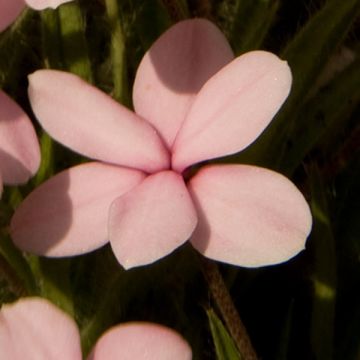

Arum ou Calla à fleurs jaune soutenu - Zantedeschia Captain Trinity
Zantedeschia elliottiana Captain Trinity - Calla Lily
Zantedeschia x elliottiana Captain Trinity
Golden Calla Lily, Yellow Calla Lily
They bloomed right away and gave me lovely orange cones... all summer long...
Domiboop, 15/12/2024
Special offer!
Receive a €20 voucher for any order over €90 (excluding delivery costs, credit notes, and plastic-free options)!
1- Add your favorite plants to your cart.
2- Once you have reached €90, confirm your order (you can even choose the delivery date!).
3- As soon as your order is shipped, you will receive an email containing your voucher code, valid for 3 months (90 days).
Your voucher is unique and can only be used once, for any order with a minimum value of €20, excluding delivery costs.
Can be combined with other current offers, non-divisible and non-refundable.
Home or relay delivery (depending on size and destination)
Schedule delivery date,
and select date in basket
This plant carries a 6 months recovery warranty
More information
We guarantee the quality of our plants for a full growing cycle, and will replace at our expense any plant that fails to recover under normal climatic and planting conditions.
Would this plant suit my garden?
Set up your Plantfit profile →
Description
The Arum or Calla 'Captain Trinity', also known as Zantedeschia, is a summer-flowering variety with a vibrant yellow colour! This rhizomatous perennial bears a generous clump of large deciduous leaves, sagittate in shape and dark green with white speckles. From May to August, it produces large solitary flowers with gracefully funnel-shaped spathes that are excellent for bouquets. Plant it in well-drained, light, rich, and moist soil in a location that receives at least a few hours of light. It is frost-sensitive and ideally grown in a pot, adding beauty to terraces and balconies with its dense foliage and abundant flowering throughout the year. In mild climates, these qualities make it suitable for mass planting along water edges, accompanied by foliage plants and a thick layer of mulch.
Zantedeschia 'Captain Trinity' is one of the many hybrids obtained through cross-breeding between two main species native to Eastern and Southern Africa, Zantedeschia rehmannii and Zantedeschia elliottiana. 'Captain Trinity' is a stemless species with large sagittate leaves, dark green with marbled white patterns. Moderately tall, it reaches about 40cm (16in) in height and 50cm (20in) in width. Like other hybrids, this plant requires specific growing conditions to flower. The flower, typical of arums, produces a highly ornamental spathe, almost 10cm (4in) in diameter, concealing a golden yellow spadix at its centre. Its thick roots grow perpendicularly in the growing medium, resembling fleshy and trailing rhizomes. In nature, this plant grows in marshes that usually dry out in summer, under warm climates all year round. The vegetation dries up, and the tuber enters a dormant period. This vegetative cycle must be strictly respected in cultivation. Florist's arums can live for many years if the cyclic resting period is well observed.
Zantedeschia 'Captain Trinity' is particularly suited for container cultivation as long as it receives regular watering. It can also be planted in moist areas, near a water source, or even partially submerged in less than 20cm (8in) of water during summer. Its exotic-looking foliage will beautifully complement Japanese maples, large ferns, sedges, and creeping Lysimachias in a humid and lush environment. In regions with colder climates, dig up the rhizomes and keep them dry at 10 °C during winter, before replanting them next spring. Otherwise, apply a minimum mulch layer of 10 to 20cm (4 to 8in).
Zantedeschia elliottiana Captain Trinity - Calla Lily in pictures


Plant habit
Flowering
Foliage
Botanical data
Zantedeschia
x elliottiana
Captain Trinity
Araceae
Golden Calla Lily, Yellow Calla Lily
Cultivar or hybrid
Other Arums
View all →Planting and care
Plant your 'Captain Trinity' Calla bulbs from March to April, at a depth of 12cm (5in), spaced 15cm (6in) apart, preferably in a moist location. Apply organic fertilizer at planting time and at least once a year. They can also be grown in large pots, but make sure to water them regularly to keep the soil moist, and fertilize every 2 months during the growing season. Mulch them when the first cold weather arrives, and protect them with a bubble wrap cover, as they are not very hardy in northerly regions. In pots, store them indoors during the winter. They will form beautiful flower clusters from June to August within a few years. You can prune the foliage after the first frost.
Planting period
Intended location
Care
Planting & care advice
-
, onOrder confirmed
Reply from on Promesse de fleurs
Similar products
Haven't found what you were looking for?
Hardiness is the lowest winter temperature a plant can endure without suffering serious damage or even dying. However, hardiness is affected by location (a sheltered area, such as a patio), protection (winter cover) and soil type (hardiness is improved by well-drained soil).

Photo Sharing Terms & Conditions
In order to encourage gardeners to interact and share their experiences, Promesse de fleurs offers various media enabling content to be uploaded onto its Site - in particular via the ‘Photo sharing’ module.
The User agrees to refrain from:
- Posting any content that is illegal, prejudicial, insulting, racist, inciteful to hatred, revisionist, contrary to public decency, that infringes on privacy or on the privacy rights of third parties, in particular the publicity rights of persons and goods, intellectual property rights, or the right to privacy.
- Submitting content on behalf of a third party;
- Impersonate the identity of a third party and/or publish any personal information about a third party;
In general, the User undertakes to refrain from any unethical behaviour.
All Content (in particular text, comments, files, images, photos, videos, creative works, etc.), which may be subject to property or intellectual property rights, image or other private rights, shall remain the property of the User, subject to the limited rights granted by the terms of the licence granted by Promesse de fleurs as stated below. Users are at liberty to publish or not to publish such Content on the Site, notably via the ‘Photo Sharing’ facility, and accept that this Content shall be made public and freely accessible, notably on the Internet.
Users further acknowledge, undertake to have ,and guarantee that they hold all necessary rights and permissions to publish such material on the Site, in particular with regard to the legislation in force pertaining to any privacy, property, intellectual property, image, or contractual rights, or rights of any other nature. By publishing such Content on the Site, Users acknowledge accepting full liability as publishers of the Content within the meaning of the law, and grant Promesse de fleurs, free of charge, an inclusive, worldwide licence for the said Content for the entire duration of its publication, including all reproduction, representation, up/downloading, displaying, performing, transmission, and storage rights.
Users also grant permission for their name to be linked to the Content and accept that this link may not always be made available.
By engaging in posting material, Users consent to their Content becoming automatically accessible on the Internet, in particular on other sites and/or blogs and/or web pages of the Promesse de fleurs site, including in particular social pages and the Promesse de fleurs catalogue.
Users may secure the removal of entrusted content free of charge by issuing a simple request via our contact form.
The flowering period indicated on our website applies to countries and regions located in USDA zone 8 (France, the United Kingdom, Ireland, the Netherlands, etc.)
It will vary according to where you live:
- In zones 9 to 10 (Italy, Spain, Greece, etc.), flowering will occur about 2 to 4 weeks earlier.
- In zones 6 to 7 (Germany, Poland, Slovenia, and lower mountainous regions), flowering will be delayed by 2 to 3 weeks.
- In zone 5 (Central Europe, Scandinavia), blooming will be delayed by 3 to 5 weeks.
In temperate climates, pruning of spring-flowering shrubs (forsythia, spireas, etc.) should be done just after flowering.
Pruning of summer-flowering shrubs (Indian Lilac, Perovskia, etc.) can be done in winter or spring.
In cold regions as well as with frost-sensitive plants, avoid pruning too early when severe frosts may still occur.
The planting period indicated on our website applies to countries and regions located in USDA zone 8 (France, United Kingdom, Ireland, Netherlands).
It will vary according to where you live:
- In Mediterranean zones (Marseille, Madrid, Milan, etc.), autumn and winter are the best planting periods.
- In continental zones (Strasbourg, Munich, Vienna, etc.), delay planting by 2 to 3 weeks in spring and bring it forward by 2 to 4 weeks in autumn.
- In mountainous regions (the Alps, Pyrenees, Carpathians, etc.), it is best to plant in late spring (May-June) or late summer (August-September).
The harvesting period indicated on our website applies to countries and regions in USDA zone 8 (France, England, Ireland, the Netherlands).
In colder areas (Scandinavia, Poland, Austria...) fruit and vegetable harvests are likely to be delayed by 3-4 weeks.
In warmer areas (Italy, Spain, Greece, etc.), harvesting will probably take place earlier, depending on weather conditions.
The sowing periods indicated on our website apply to countries and regions within USDA Zone 8 (France, UK, Ireland, Netherlands).
In colder areas (Scandinavia, Poland, Austria...), delay any outdoor sowing by 3-4 weeks, or sow under glass.
In warmer climes (Italy, Spain, Greece, etc.), bring outdoor sowing forward by a few weeks.























































